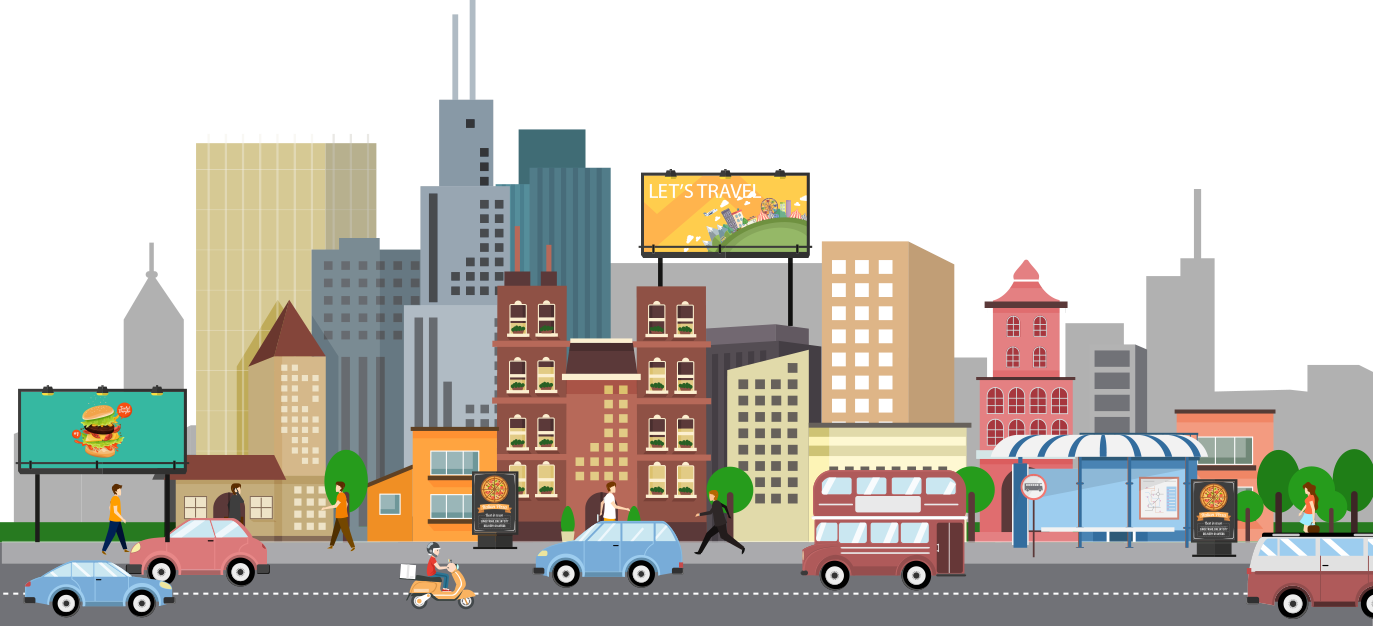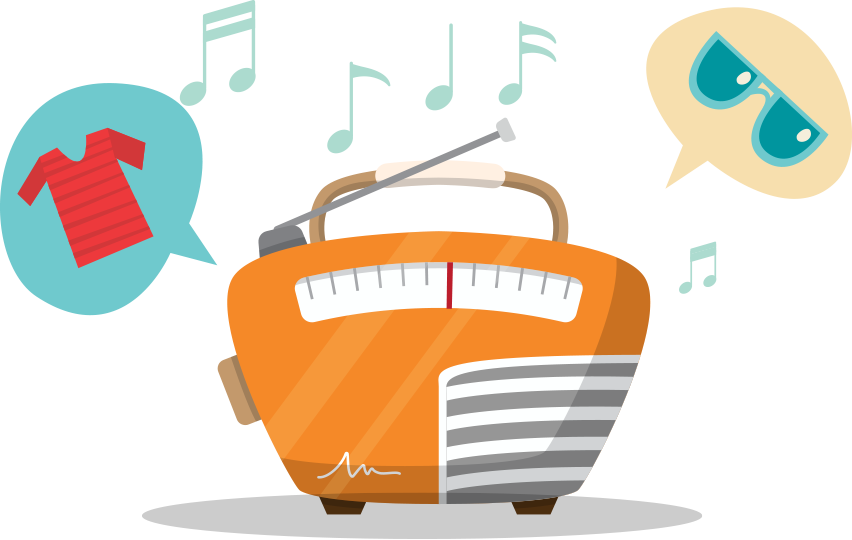Advertising Approaches
Advertising can be categorised in lots of different ways. in this section we will be looking at advertising based on traditional types of media used to transmit a message. Let’s learn now a bit more about the advantages and disadvantages of each of these mediums.
We will describe below four types of media advertising and you are expected to select the alternative that best matches the description.
Question 1 of 4
A medium used for transmitting moving images with sound, in monochrome (black-and-white), or in colour, and in two or three dimensions.

Correct!

Television
A medium used for transmitting moving images with sound, in monochrome (black-and-white), or in colour, and in two or three dimensions.
 Advantanges
Advantanges
- It permits you to reach large numbers of people on a national or regional level in a short period of time.
- It offers the ability to convey your message with sight, sound and motion.
- Independent stations and cable offer new opportunities to pinpoint local audiences.
 Disadvantages
Disadvantages
- Message is temporary, and may require multiple exposure for the ad to rise above the clutter.
- Preferred ad times are often sold out far in advance.
- Relatively expensive in terms of creative, production and airtime costs.
- Ads on network affiliates are concentrated in local news broadcasts and station breaks.
- Limited length of exposure, as most ads are only thirty seconds long or less, which limits the amount of information you can communicate.
Question 2 of 4
Usually a periodical publication, which is printed or electronically published, and contains a variety of content.

Correct!
Magazine
Magazines are usually a periodical publication, which is printed or electronically published, and contains a variety of content. They are generally financed by advertising, by a purchase price, by prepaid subscriptions, or a combination of the three.
A type of advert specific to this media are advertorials. They basically combine the benefits of traditional print ads with feature articles written by a news reporter.
Advertorials are especially copy-driven with a lengthy overview of a product's benefits or a narrative that depicts the attributes of a product. They do sometimes include visual elements, however.
What are the advantages and disadvantages of advertorials?
 Advantanges
Advantanges
- Feature stories usually go into more details about your company or products than traditional ads.
- A major reason advertisers choose advertorial placements is their perception of credibility. Advertorials are intended to read like the content in the medium. Thus, the more closely your brand or products fit the audience's interests, the more impact you can have.
 Disadvantages
Disadvantages
- You have limited control over what gets published.
- Advertorials are especially hard to distinguish from regular content on websites. Regulations are, however, now in place which mean websites are expected to indicate when editorials are paid placements and not regular feature content.

Question 3 of 4
A medium generally placed along highways and busy streets or in bus stops.

Correct!
Outdoor Media
A medium generally placed along highways and busy streets or in bus stops.
 Advantanges
Advantanges
- Because billboards are generally placed along highways and busy streets, you'll be guaranteed that people will see your advertising.
- Many people travel the same route repeatedly, such as with their commute to work each day. This means that they'll see your billboard regularly, which makes it more likely to stick in their minds.
- You can place your billboard advertisement wherever you feel it will have the most impact. This can be a big advantage when you have a business which relates in location to the billboard.
 Disadvantages
Disadvantages
- You'll need to keep your messages short and to the point (on average, a person will see your billboard for about two to three seconds). Billboards do better when they focus more on images than on text since they are often seen by people driving by.
- Billboard companies often have businesses enter into contracts that involve long-term commitments. Mainly, this is because it takes a lot of time, energy and money to constantly change billboard ads.

Question 4 of 4
A universal medium enjoyed by people at one time or another during the day, at home, at work and even in the car.

Correct!
Radio
A universal medium enjoyed by people at one time or another during the day, at home, at work and even in the car.

 Advantanges
Advantanges
- There is a vast array of programme formats which enable you efficiently to target your advertising budget. This means you can create content for narrowly defined segments of consumers who are most likely to respond to your offer.
- Gives your business personality through the creation of campaigns using sounds and voices.
- Free creative help is often available.
- Rates can generally be negotiated.
- During the past ten years, radio rates have seen less inflation than those for other media.
 Disadvantages
Disadvantages
- Because radio listeners are spread over many stations, you may have to advertise simultaneously on several stations to reach your target audience.
- Listeners cannot go back to your ads to go over important points.
- Ads are an interruption in the entertainment. Because of this, a radio ad may require multiple exposure to break through the listener’s “tune-out” factor and ensure message retention.
- Radio is a background medium. Most listeners are doing something else while listening, which means that your ad has to work hard to get their attention.
